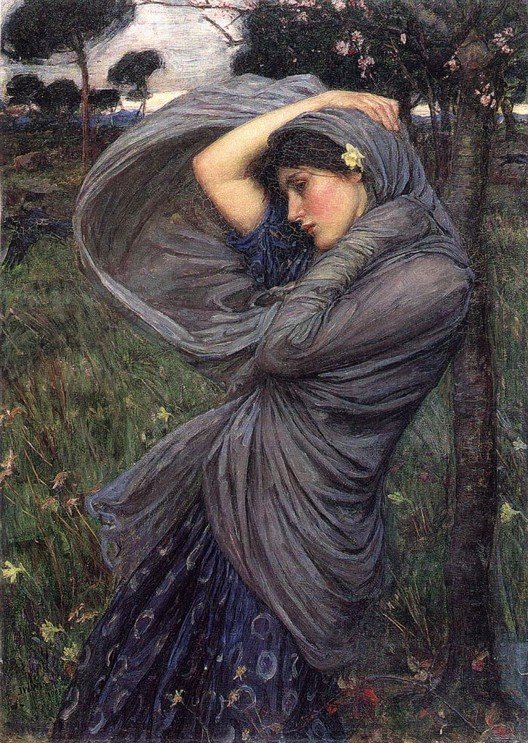Boreas is an oil painting in the Pre-RaphaeliteGroup of English artists formed in 1848 to counter what they saw as the corrupting influence of the late-Renaissance painter Raphael. style created in 1903 by the English artist John William WaterhouseEnglish artist known primarily for his depictions of women set in scenes from myth, legend or poetry. He is the best known of that group of artists who from the 1880s revived the literary themes favoured by the Pre-Raphaelites. (1849–1917);[1] in Greek and Roman mythology, Boreas is the god of the north wind.[2]
The painting shows a young woman dressed in slate-blue draperies being buffeted by the wind, behind her a spring landscape with pink blossoms and yellow daffodils, one of which she has in her hair.
Following its exhibition at the Royal Academy in 1904 the painting seemed to have disappeared. After its reappearance almost a century later it was sold at auction in London in 1996 for £848,500, the record price for a Waterhouse at that time,[4] and is now in the hands of an anonymous private collector.[4]

